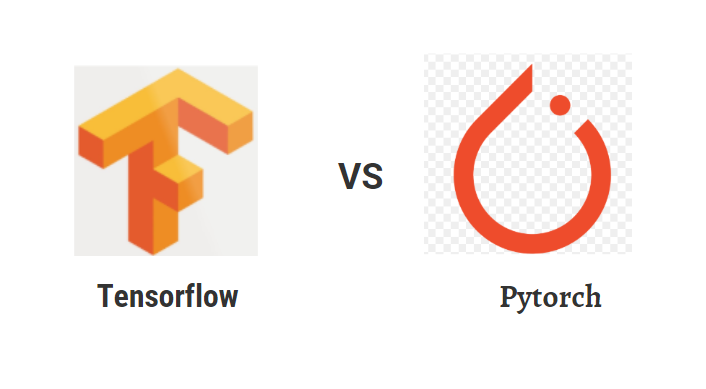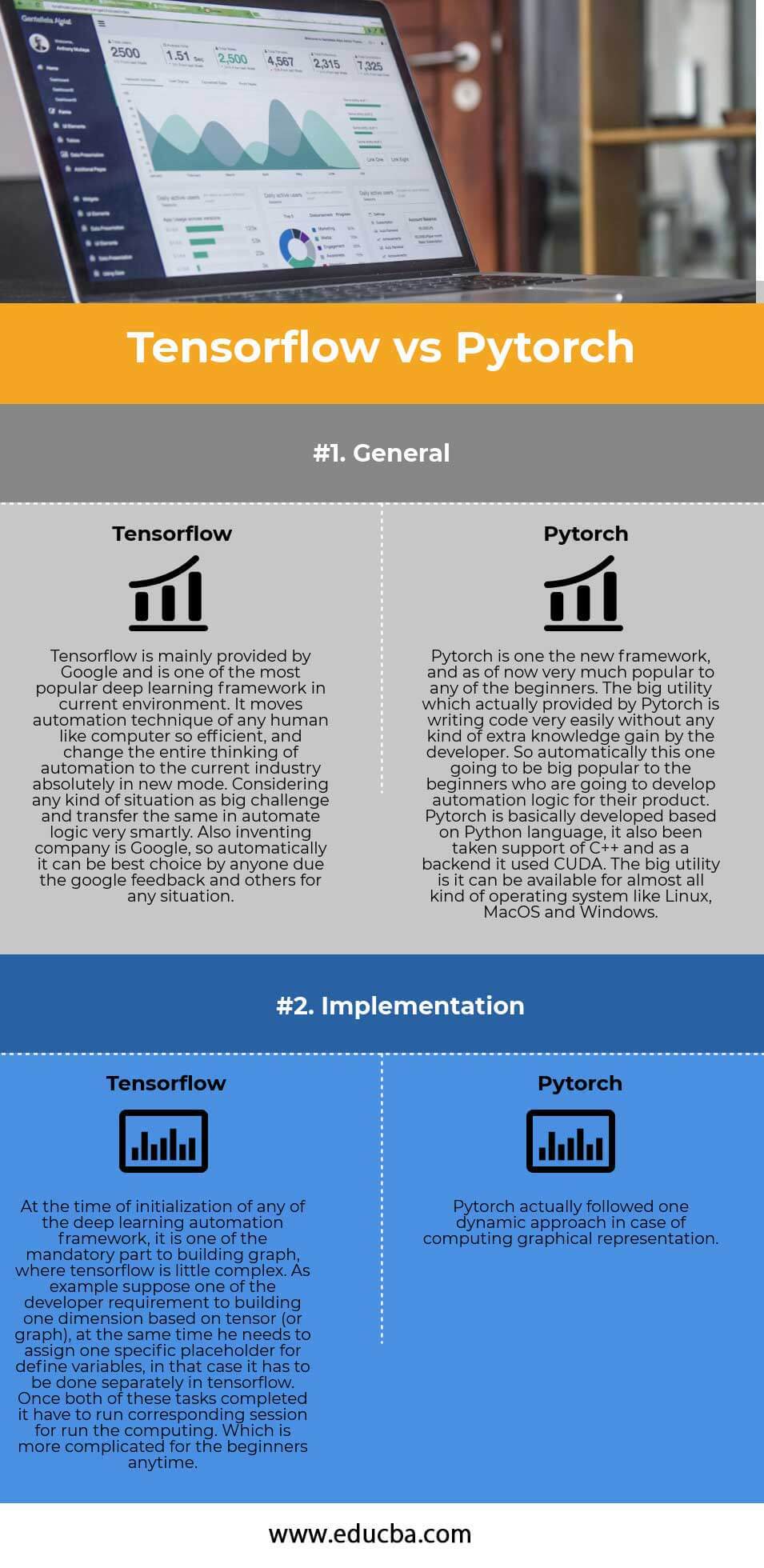Updated March 2, 2023
Difference Between Tensorflow vs Pytorch
In the current world, artificial intelligence is one of the key possibilities for any kind of organization. All the organizations mainly target to make as much as possible automation and avoid any kind of manual dependency for every sector of their business. In this kind of situation, deep learning is coming with some very attractive architecture with varieties of utilities and is very easy to develop by the developer at any point in time. It also helps any kind of organization who are mainly targeting automation and willing to avoid human dependency, by using different kinds of methodologies that always maximize the preferable efficiency of any kind of computer which actually works like a human. Now considering varieties developers who are willing to use that automation technique anytime for their product for better automation, they have to find out some open tools for using and developing the same. There have a lot of big companies like Google, Facebook, or other varieties big companies have their own multiple releases which depend on different kinds of frameworks, but the maximum is developed in Python language where someone can easily learn about the same any time, can able to develop as per their product requirement and also can train other peoples from varieties documentation provided by those big companies.
Head To Head Comparison Between Tensorflow and Pytorch (Infographics)
Below are the top 2 comparisons of Tensorflow and Pytorch:
Key Differences Between Tensorflow and Pytorch
Let us discuss some of the major differences between Tensorflow and Pytorch:
- Tensorflow is one of the popular auto computation frameworks which anytime using by multiple organizations for a long time without any kind of called hustle. It was designed by Google and provided one of the first taste to any of the developers who are actually willing to make automation for their product. A maximum big organization is normally preferring to use Tensorflow due to their excellent support at any point in time and also very brief documentation. It also helps developers for their best support for any kind of doubts or understanding gap, especially in the case of avoiding the complexity of graphical computing design. Running the session in TensorFlow is a little critical than any other market available popular framework. Whereas Pytorch is, on the other hand, a very new framework introduces recently, it’s the main agenda for avoiding any kind of complexity normally developers are facing in case of working with TensorFlow. The developer can able to write the code very easily in Pytorch by getting some basic knowledge of Python coding structure. Pytorch is mainly developed based on Python technologies; it also used C++ and maintain CUDA support for the backend. It also follows one of the big utilities of supporting almost all the big operating systems available in the markets like Linux, Windows or MacOS.
- Implementation of TensorFlow is a little difficult always for beginners, anytime for their complexity of steps. Suppose one wants to use TensorFlow for building one of the graphical presentations on tenor or graph means willing to mentioning or building one dimension on tenure and as well as willing to plan for assign one specific placeholder for any kind of variables defined in the code, in that case, a developer should need to follow two different steps any time for the execution not only that it will not start the required session. For starting the session, it has to run the session in order to keep the mind of all the computation which needs to work out for that specific step. It always is a little complex anytime for beginners. Whereas Pytorch is a little advance on that specific technique, any kind of assignment to a specific placeholder on the variable and graphical building can be done by one new concept like graphical approach by using dynamic computation. It is always easy for the developer who is actually very much comfortable in mathematical libraries available in Python technologies. It is very easy for the developer to write input and output functions, don’t need to take any additional headache for implementing proper dimension in tenure.
Tensorflow and Pytorch Comparison Table
Below is the topmost comparison among Tensorflow vs Pytorch:
| Basis of Comparison |
Tensorflow |
Pytorch |
| General | Tensorflow is mainly provided by Google and is one of the most popular deep learning frameworks in the current environment. It moves the automation technique of any human-like computer so efficiently and changes the entire thinking of automation to the current industry absolutely in the new mode. Considering any kind of situation as a big challenge and transfer the same in automating logic very smartly. Also, inventing company is Google, so automatically, it can be the best choice by anyone due to Google feedback and others for any situation. | Pytorch is one of the new frameworks, and as of now, very much popular with any of beginners. The big utility actually provided by Pytorch is writing code very easily without any kind of extra knowledge gain by the developer. So automatically, this one going to be big popular with the beginners who are going to develop automation logic for their product. Pytorch is basically developed based on Python language, it also been taken the support of C++, and as a backend, it used CUDA. The big utility is it can be available for almost all kinds of operating systems like Linux, MacOS, and Windows. |
| Implementation | At the time of the initialization of any of the deep learning automation frameworks, it is one of the mandatory parts to building graphs, where TensorFlow is a little complex. As an example, suppose one of the developer requirements to building one dimension based on tensor (or graph), at the same time he needs to assign one specific placeholder for defined variables; in that case, it has to be done separately in TensorFlow. Once both of these tasks are completed, it has to run the corresponding session for a run the computing. Which is more complicated for beginners anytime. | Pytorch actually followed one dynamic approach in the case of computing graphical representation. |
Conclusion
Comparing both Tensorflow vs Pytorch, TensorFlow is mostly popular for its visualization features which are automatically developed as it is working for a long time in the market. Whereas Pytorch is too new into the market, they mainly popular for its dynamic computing approach, which makes this framework more popular to beginners. But still, TensorFlow is always preferable for any kind of organization for excellent visualization, support, and long-time availability.
Recommended Article
This has been a guide to the top difference between Tensorflow vs Pytorch. Here we discuss the head-to-head comparison between the Tensorflow vs Pytorch with infographics and a comparison table. You may also look at the following articles to learn more –




